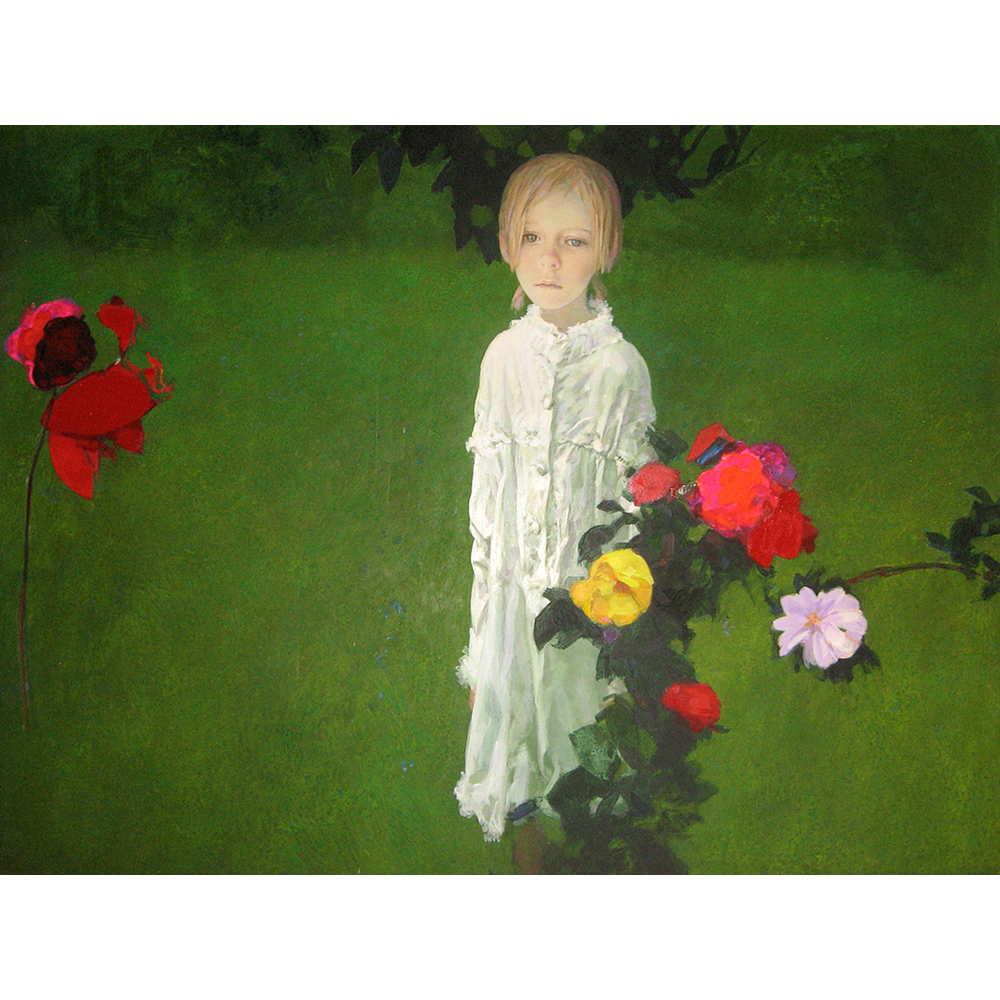Artwork Description
Igor Melnikov – Warm Rain
Dimensions: 35 x 48.75″ approx
Year: 2019
Media: acrylic on panel
Melnikov’s Swimmer breaks with Melnikov’s traditional color palette, instead relying on the contrast between the saturated landscape and the stark whites of the central figure. The young girl bears an expression of ambivalence, which can be described as both contemplative or forlorn—at odds with the vibrancy of the flowers and lawns encompassing her. The work conveys Melnikov’s artistic versatility, employing a range of brush techniques, and which grant further contrast between the painterly and more delicate details.
Igor Melnikov’s works center about processes of discovery and development. After learning that the black and white images of old master works he looked at as a child were painted in color, Melnikov has oriented his work to allow viewers to attach meaning to the otherwise simple scenes. Many of his paintings portray landscapes and young children—subjects which allow viewers to adapt his visual language into individual understandings. This approach complicates traditional associations between children and innocence, suggesting that Melnikov’s subjects are at once dynamic and open to a broad range of interpretations. Melnikov’s work also focuses on emotion—reworking feelings such as tragedy and happiness. He believes the two coexist, where allowing oneself to experience happiness inexorably makes one vulnerable to tragedy. Within this, Melnikov does not define happiness as mere pleasure; rather, it is something which demands attributes such as courage and touches on wider themes including freedom, dignity, and consciousness. Melnikov’s paintings are collage-like, yet not in the traditional, material sense of the process—instead layering his own psychological explorations onto his understandings of the human condition. While his muted color palettes might appear reductive, they instead focus viewers’ attention on the figures within the work and encourage thorough readings of the detailing that remains visually available.
by Keira Seidenberg, Art History/Gender Studies student, McGill University

